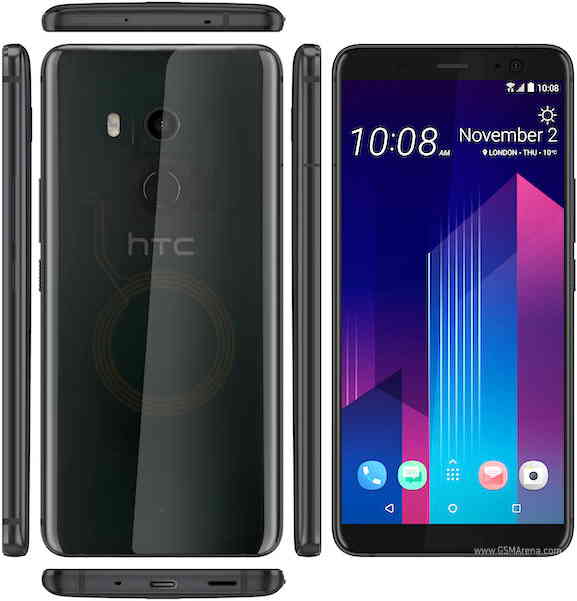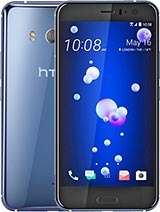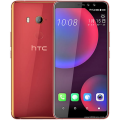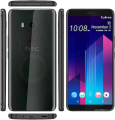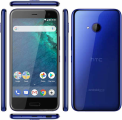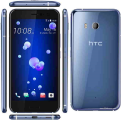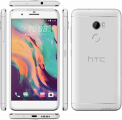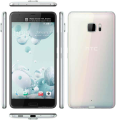HTC U11 Plus 64 GB Prices
Important Note.
- All prices are in Pakistani Rupee (PKR)
- Prices may vary at stores and our effort will be to provide you with the updated prices.
- The latest price of HTC U11 Plus 64 GB was obtained on 17 مئی, 2019. The prices at the original stores had been updated on the respective mentioned dates.
- Find out WhatMobile price has dropped in Pakistan by selecting Notify Price Drop button
- Find out WhatMobile has better specifications by clicking Add To Compare Button find out what Mobile has better reviews by visiting our reviews section
- Find out WhatMobile is cheaper on which retailer by clicking Compare prices from retailers button
Search Terms
- HTC U11 Plus 64 GB
Specifications
| GENERAL | |
| 2G Network | GSM 850 / 900 / 1800 / 1900 - SIM 1 & SIM 2 (dual-SIM model only) |
|---|---|
| 3G Network | HSDPA 850 / 900 / 1900 / 2100 |
| 4G Network | LTE band 1(2100), 3(1800), 4(1700/2100), 5(850), 7(2600), 8(900), 12(700), 17(700), 20(800), 28(700), 32(1500), 38(2600), 39(1900), 40(2300), 41(2500) |
| Sim | Single SIM (Nano-SIM) or Hybrid Dual SIM (Nano-SIM, dual stand-by) - IP68 certified |
| Announced | 17/11/2017 |
| Status | Available. Released 2017, December |
| BODY | |
| Dimensions | 158.5 x 74.9 x 8.5 mm (6.24 x 2.95 x 0.33 in) |
| Weight | 188 g (6.63 oz) |
| DISPLAY | |
| Display Size | 6.0 inches, 92.6 cm2 (~78.0% screen-to-body ratio) |
| Resolution | 1440 x 2880 pixels, 18:9 ratio (~538 ppi density) |
| MultiTouch | Yes |
| Protection | Corning Gorilla Glass 5 - HTC Sense UI |
| SOUND | |
| AlertTypes | Vibration; MP3, WAV ringtones |
| LoudSpeaker | Yes, with stereo speakers |
| 3.5mm jack | No - 24-bit/192kHz audio - Active noise cancellation with dedicated mic |
| MEMORY | |
| CardSlot | microSD, up to 256 GB (uses SIM 2 slot) - dual SIM model only |
| Internal | 64 GB, 4 GB RAM |
| DATA | |
| GPRS | Yes |
| EDGE | Yes |
| Speed | HSPA 42.2/5.76 Mbps, LTE-A (4CA) Cat15 800/150 Mbps |
| WLAN | Wi-Fi 802.11 a/b/g/n/ac, dual-band, Wi-Fi Direct, DLNA, hotspot |
| Blue Tooth | 5.0, A2DP, aptX HD, LE |
| NFC | Yes |
| USB | 3.1, Type-C 1.0 reversible connector |
| CAMERA | |
| Camera Primary | 12 MP (f/1.7, 1.4 µm, Dual Pixel PDAF), phase detection autofocus, OIS, dual-LED dual-tone flash |
| Camera Features | Geo-tagging, touch focus, face detection, HDR, panorama |
| CameraVideo | 2160p@30fps, 1080p@30/60/120fps, HDR, 24-bit/192kHz stereo sound rec. |
| CameraSecondary | 8 MP, f/2.0, 1080p, HDR, panorama |
| FEATURES | |
| Processor Cores | Octa-Core |
| OS | Android 8.0 (Oreo) |
| CPU | Octa-core (4x2.45 GHz Kryo & 4x1.9 GHz Kryo) |
| Sensors | Fingerprint (rear-mounted), accelerometer, gyro, proximity, compass |
| Messaging | SMS (threaded view), MMS, Email, Push Email |
| Browser | HTML5 |
| Radio | No |
| GPS | Yes, with A-GPS, GLONASS, BDS |
| Java | No |
| Colors | Translucent Black, Ceramic Black, Amazing Silver |
| Others | - Fast battery charging (Quick Charge 3.0) - XviD/MP4/H.264/WMV player - MP3/eAAC+/WMA/WAV/FLAC player - Document editor - Photo/video editor |
| BATTERY | |
| Battery | Non-removable Li-Ion 3930 mAh battery |
| TalkTime | Up to 25 h (3G) |
| MISC | |
Reviews
03/11/2017 - 4:01pm

HTC just launched the HTC U11 Plus, a bigger version of the HTC U11 with a larger, edge-to-edge 18:9 widescreen display, as well as some other spec tweaks. However, according to reports, the handset was actually originally conceived as the Pixel XL 2 to be made by HTC on Google's behalf.
We have to backtrack a bit here to see the full picture.
You see, just as with the Nexus smartphones, Google's new Pixel series has the company bringing in partner firms to help develop and create the handsets, which Google then brands up as Pixel devices and sells them to the public. In the old Nexus days this happened with LG, HTC, Samsung, Huawei and Motorola at different points on different models.
With the first-gen Pixel and Pixel XL, HTC made both for Google.
When the Pixel 2 series rumours came around, it wasn't long before the rumour mill had a very specific picture of what was happening; there were three prototypes in development. Two were from HTC, the regular Pixel 2 was codenamed "Walleye" while the Pixel XL 2 was codenamed "Muskie", and a third even larger model was being created by LG, dubbed "Taimen".
What actually happened was the "Muskie" got axed, the LG "Taimen" became the Pixel XL 2 which eventually launched, alongside HTC's "Walleye" Pixel 2.
A report from The Verge, citing an unnamed "source familiar with HTC", claims the HTC U11 Plus is, in fact, the "Muskie"; it's alleged that HTC rescued the device from development purgatory after Google changed its plans. The unnamed source apparently "confirmed" this information to The Verge.
HTC is said to have continued developing the phone and then launched it with its own branding and design features. It would go some way to explaining why the HTC U11 Plus looks VERY similar to the Pixel XL 2, as well as making a lot of logical sense from HTC's perspective.
Write Your Own Review
My Recent Reviews
- Be first to post review for this product.
comments powered by Disqus




